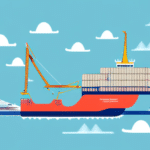Understanding F.O.B. Shipping Point
F.O.B. (Free On Board) shipping point is a fundamental term in supply chain management that specifies the location where ownership and responsibility for goods transition from the seller to the buyer. This term is especially significant in international shipping, where goods traverse multiple jurisdictions before reaching their final destination.
Definition and Transfer of Title
Under an F.O.B. shipping point agreement, the title and ownership of goods pass from the seller to the buyer at the designated shipping point. This means that once the goods are loaded onto the carrier, the buyer assumes ownership and is responsible for any risks or costs associated with transportation.
Shipping Point vs. Destination Point
The shipping point refers to the location where goods leave the seller's possession, such as the seller’s warehouse or dock. In contrast, the destination point is where goods are delivered to the buyer. Clearly defining these points in the contract is essential to avoid disputes over ownership and responsibility during transit.
F.O.B. Shipping Point vs. F.O.B. Destination
Key Differences
While F.O.B. shipping point transfers ownership at the point of shipment, F.O.B. destination transfers ownership upon delivery to the buyer’s location. This distinction affects who bears the risk of loss or damage during transit.
Implications for Risk and Cost
In F.O.B. shipping point, the buyer is responsible for transportation costs and risks once the goods are shipped. Conversely, in F.O.B. destination, the seller retains responsibility until the goods reach the buyer's location, potentially resulting in higher shipping costs for the seller but increased control over the shipping process.
Accounting and Tax Implications
The choice between F.O.B. shipping point and destination can impact how revenue is recognized in accounting and may have tax implications. For instance, under F.O.B. shipping point, sellers can recognize revenue once the goods are shipped, potentially benefiting cash flow. Buyers under F.O.B. destination might defer payment until receipt of goods, which can also impact financial planning.
Advantages and Disadvantages of F.O.B. Shipping Point
Benefits for Sellers and Buyers
- Sellers: Reduced shipping costs and minimized inventory holding time.
- Buyers: Greater control over the shipping process and potentially lower costs by managing transportation.
Potential Drawbacks
- Buyers: Assume the risk of loss or damage during transit.
- Buyers: Responsibility for transportation logistics can be challenging, especially for international shipments.
Suitability Across Industries
F.O.B. shipping point is widely used in manufacturing, retail, and e-commerce industries. However, it may not be suitable for industries dealing with perishable goods or items requiring special handling, where the risk of damage during transit is higher.
Negotiating and Managing F.O.B. Shipping Point Terms
Negotiation Strategies with Suppliers
Effective negotiation involves clearly defining the shipping point, agreeing on carriers, and setting delivery timelines. Both parties should understand their responsibilities to mitigate potential disputes.
Best Practices for Management
- Set clear expectations regarding packaging and handling to prevent damage during transit.
- Choose reliable carriers and consider insurance to protect against loss or damage.
- Implement real-time tracking systems to monitor shipments and ensure timely delivery.
Legal Considerations
Including precise F.O.B. shipping point terms in contracts is essential to prevent legal disputes. Clearly outline responsibilities and transfer of ownership to ensure compliance with applicable laws and regulations.
Common Misconceptions and FAQs
Misunderstandings Explained
A common misconception is that F.O.B. shipping point refers to the delivery destination. In reality, it specifically denotes the point at which ownership transfers from seller to buyer. Another misunderstanding is that sellers remain responsible for goods in transit under F.O.B. shipping point, which is not the case.
Frequently Asked Questions
- When does title transfer in F.O.B. shipping point? Ownership transfers when goods are loaded onto the carrier at the shipping point.
- Who is responsible if goods are damaged during transit? Under F.O.B. shipping point, the buyer is responsible once the goods are shipped.
- Can shipping terms affect tax obligations? Yes, the point of title transfer can influence tax reporting and obligations.
Real-World Applications and Case Studies
Examples from Various Industries
Manufacturers use F.O.B. shipping point to reduce transportation costs and lead times, enabling faster delivery to retailers. Retailers leverage F.O.B. shipping point to enhance inventory management and respond quickly to market demands.
Case Studies of Successful Implementation
Company A, a manufacturing firm, adopted F.O.B. shipping point and reported a 15% reduction in shipping costs and a 10% improvement in delivery times. Company B, a retailer, implemented F.O.B. shipping point terms to streamline their supply chain, resulting in increased customer satisfaction and reduced inventory holding costs.
Future Trends in F.O.B. Shipping Point
Developments in Global Trade
As global trade continues to grow, the usage of F.O.B. shipping point is expected to rise, driven by the need for cost-effective and efficient supply chain solutions. Advances in logistics technology will further enhance the management and tracking of shipments under F.O.B. terms.
Impact of E-commerce
The booming e-commerce sector demands flexible and scalable shipping terms. F.O.B. shipping point supports this by allowing businesses to manage their shipping processes more effectively and adapt to fluctuating market demands.
For more information on shipping terms and best practices, refer to resources from the U.S. Small Business Administration and the International Chamber of Commerce.




















